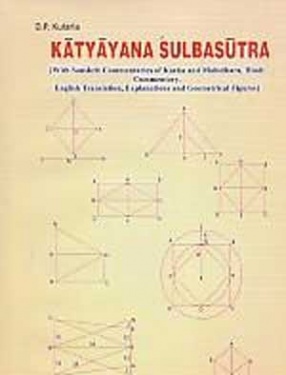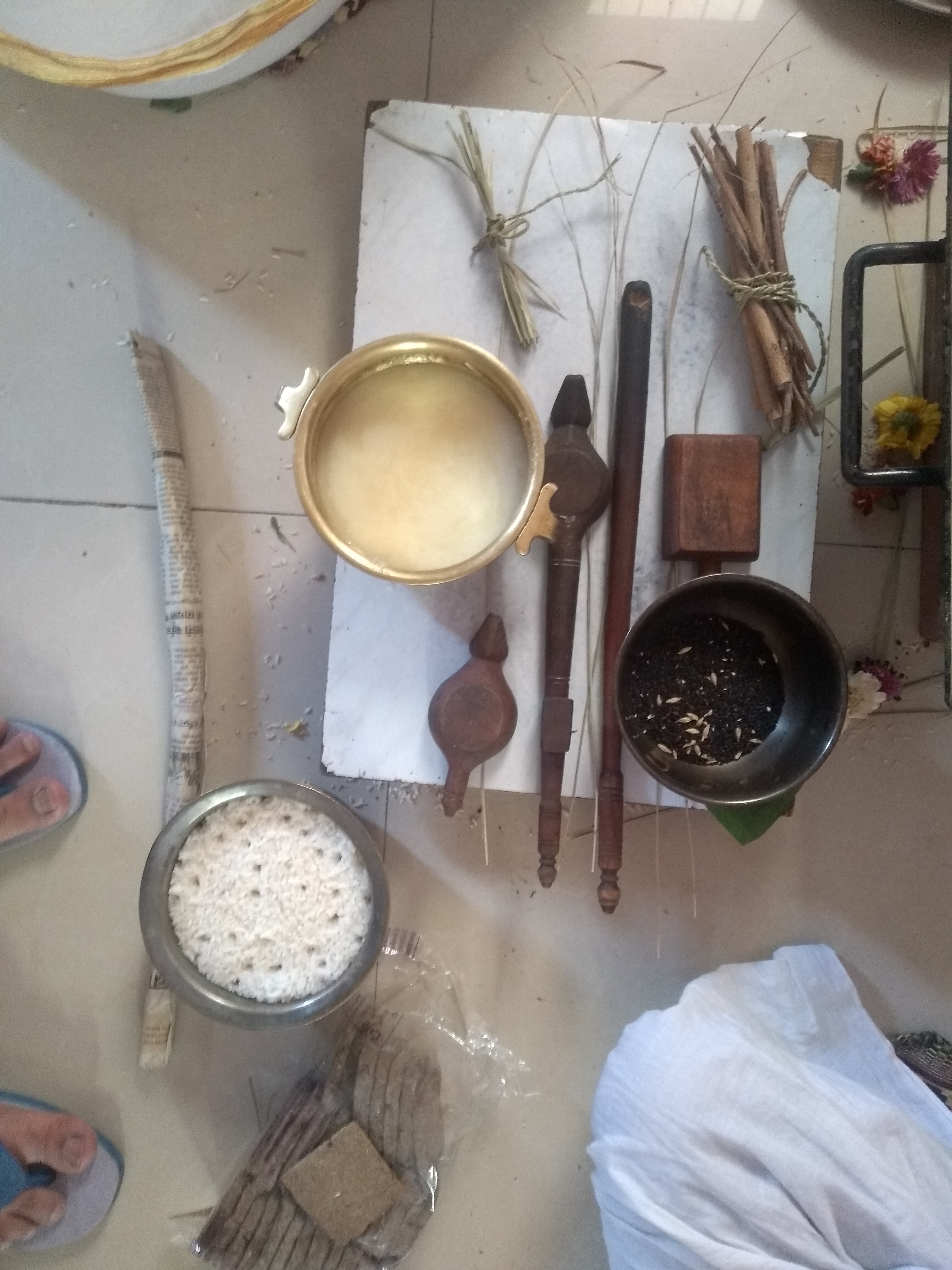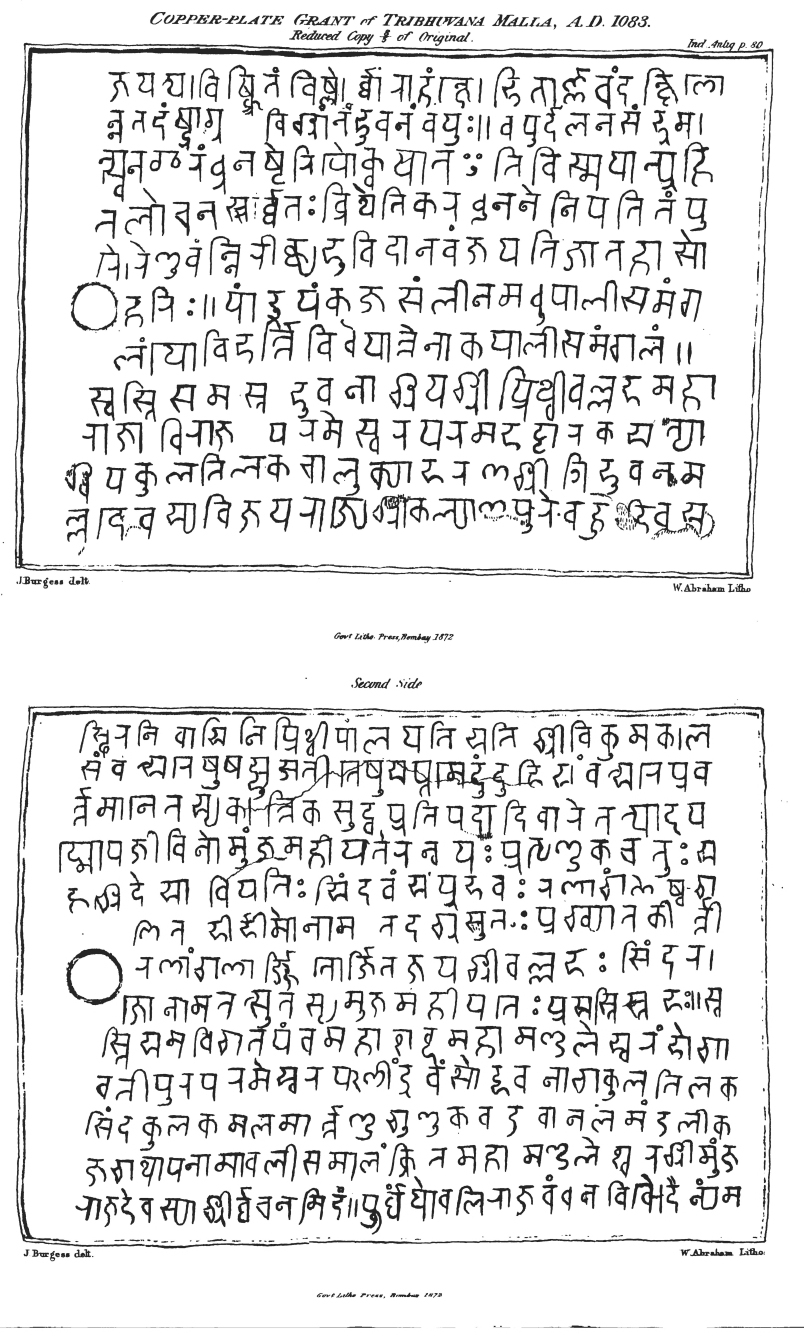|
Śrauta
Śrauta is a Sanskrit word that means "belonging to śruti", that is, anything based on the Vedas of Hinduism. It is an adjective and prefix for texts, ceremonies or person associated with śruti. The term, for example, refers to Brahmins who specialise in the ''śruti'' corpus of texts, and Śrauta Brahmin traditions in modern times can be seen in Kerala and Coastal Andhra. Etymology and meaning The Sanskrit word ''Śrauta'' is rooted in ''śruti'' (that which is heard, referring to scriptures of Hinduism). ''Śrauta'', states Johnson, is an adjective that is applied to a text, ritual practice or person, when related to śruti. Klostermaier states that the prefix means "belonging to śruti", and includes ceremonies and texts related to śruti. The word is sometimes spelled ''Shrauta'' in scholarly literature. History Spread via Indian religions, homa traditions are found all across Asia, from Samarkand to Japan, over a 3000-year history. A ''homa'', in all its Asian variations ... [...More Info...] [...Related Items...] OR: [Wikipedia] [Google] [Baidu] |
Kalpa (Vedanga)
Kalpa ( sa, कल्प) means "proper, fit" and is one of the six disciplines of the Vedānga, or ancillary science connected with the Vedas – the scriptures of Hinduism. This field of study is focused on the procedures and ceremonies associated with Vedic ritual practice.James Lochtefeld (2002), "Kalpa" in The Illustrated Encyclopedia of Hinduism, Vol. 1: A–M, Rosen Publishing, , p. 339. The major texts of Kalpa Vedanga are called ''Kalpa Sutras'' in Hinduism. The scope of these texts includes Vedic rituals, rites of passage rituals associated with major life events such as birth, wedding and death in family, as well as personal conduct and proper duties in the life of an individual. Most Kalpasutras texts have experienced interpolation, changes and consequent corruption over their history, and Apasthamba Kalpasutra ancillary to the Yajurveda may be the best preserved text in this genre. Kalpa Sutras are also found in other Indian traditions, such as Jainism. Etymology K ... [...More Info...] [...Related Items...] OR: [Wikipedia] [Google] [Baidu] |
Vedas
upright=1.2, The Vedas are ancient Sanskrit texts of Hinduism. Above: A page from the '' Atharvaveda''. The Vedas (, , ) are a large body of religious texts originating in ancient India. Composed in Vedic Sanskrit, the texts constitute the oldest layer of Sanskrit literature and the oldest scriptures of Hinduism. There are four Vedas: the Rigveda, the Yajurveda, the Samaveda and the Atharvaveda. Each Veda has four subdivisions – the Samhitas (mantras and benedictions), the Aranyakas (text on rituals, ceremonies, sacrifices and symbolic-sacrifices), the Brahmanas (commentaries on rituals, ceremonies and sacrifices), and the Upanishads (texts discussing meditation, philosophy and spiritual knowledge).Gavin Flood (1996), ''An Introduction to Hinduism'', Cambridge University Press, , pp. 35–39A Bhattacharya (2006), ''Hindu Dharma: Introduction to Scriptures and Theology'', , pp. 8–14; George M. Williams (2003), Handbook of Hindu Mythology, Oxford University Press, , p. ... [...More Info...] [...Related Items...] OR: [Wikipedia] [Google] [Baidu] |
Baudhayana Sutras
The (Sanskrit: बौधायन) are a group of Vedic Sanskrit texts which cover dharma, daily ritual, mathematics and is one of the oldest Dharma-related texts of Hinduism that have survived into the modern age from the 1st-millennium BCE. They belong to the ''Taittiriya'' branch of the Krishna Yajurveda school and are among the earliest texts of the genre.. In relative chronology, they predate Āpastamba, which is dated by Robert Lingat to the ''sutra'' period proper, between c. 500 to 200 BCE. Robert Lingat, The Classical Law of India, (Munshiram Manoharlal Publishers Pvt Ltd, 1993), p. 20 The Baudhayana sūtras consist of six texts: # the , probably in 19 (questions), # the in 20 (chapters), # the in 4 , # the Grihyasutra in 4 , # the in 4 and # the in 3 . The ' is noted for containing several early mathematical results, including an approximation of the square root of 2 and the statement of the Pythagorean theorem. Baudhāyana Shrautasūtra His Śr ... [...More Info...] [...Related Items...] OR: [Wikipedia] [Google] [Baidu] |
Shulba Sutras
The ''Shulva Sutras'' or ''Śulbasūtras'' (Sanskrit: शुल्बसूत्र; ': "string, cord, rope") are sutra texts belonging to the Śrauta ritual and containing geometry related to fire-altar construction. Purpose and origins The Shulba Sutras are part of the larger corpus of texts called the Shrauta Sutras, considered to be appendices to the Vedas. They are the only sources of knowledge of Indian mathematics from the Vedic period. Unique fire-altar shapes were associated with unique gifts from the Gods. For instance, "he who desires heaven is to construct a fire-altar in the form of a falcon"; "a fire-altar in the form of a tortoise is to be constructed by one desiring to win the world of Brahman" and "those who wish to destroy existing and future enemies should construct a fire-altar in the form of a rhombus"., p. 387, "Certain shapes and sizes of fire-altars were associated with particular gifts that the sacrificer desired from the gods: 'he who desires heaven i ... [...More Info...] [...Related Items...] OR: [Wikipedia] [Google] [Baidu] |
Brahmana
The Brahmanas (; Sanskrit: , ''Brāhmaṇam'') are Vedic śruti works attached to the Samhitas (hymns and mantras) of the Rig, Sama, Yajur, and Atharva Vedas. They are a secondary layer or classification of Sanskrit texts embedded within each Veda, which explain and instruct on the performance of Vedic rituals (in which the related Samhitas are recited). In addition to explaining the symbolism and meaning of the Samhitas, Brahmana literature also expounds scientific knowledge of the Vedic Period, including observational astronomy and, particularly in relation to altar construction, geometry. Divergent in nature, some Brahmanas also contain mystical and philosophical material that constitutes Aranyakas and Upanishads. Each Veda has one or more of its own Brahmanas, and each Brahmana is generally associated with a particular Shakha or Vedic school. Less than twenty Brahmanas are currently extant, as most have been lost or destroyed. Dating of the final codification of the ... [...More Info...] [...Related Items...] OR: [Wikipedia] [Google] [Baidu] |
Dharmaśāstra
''Dharmaśāstra'' ( sa, धर्मशास्त्र) is a genre of Sanskrit texts on law and conduct, and refers to the treatises ( śāstras) on dharma. Unlike Dharmasūtra which are based upon Vedas, these texts are mainly based on Puranas. There are many Dharmashastras, variously estimated to be 18 to about 100, with different and conflicting points of view. Each of these texts exist in many different versions, and each is rooted in Dharmasutra texts dated to 1st millennium BCE that emerged from Kalpa (Vedanga) studies in the Vedic era. The textual corpus of Dharmaśāstra were composed in poetic verses, are part of the Hindu Smritis, constituting divergent commentaries and treatises on duties, responsibilities and ethics to oneself, to family and as a member of society. The texts include discussion of ashrama (stages of life), varna (social classes), purushartha (proper goals of life), personal virtues and duties such as ahimsa (non-violence) against all living ... [...More Info...] [...Related Items...] OR: [Wikipedia] [Google] [Baidu] |
Atharvaveda
The Atharva Veda (, ' from ' and ''veda'', meaning "knowledge") is the "knowledge storehouse of ''atharvāṇas'', the procedures for everyday life".Laurie Patton (2004), Veda and Upanishad, in ''The Hindu World'' (Editors: Sushil Mittal and Gene Thursby), Routledge, , page 38 The text is the fourth Veda, and is a late addition to the Vedic scriptures of Hinduism.Laurie Patton (1994), Authority, Anxiety, and Canon: ys in Vedic Interpretation, State University of New York Press, , page 57 The language of the Atharvaveda is different from Vedic Sanskrit, preserving pre-Vedic Indo-European archaisms. It is a collection of 730 hymns with about 6,000 mantras, divided into 20 books.Maurice BloomfieldThe Atharvaveda Harvard University Press, pages 1-2 About a sixth of the Atharvaveda texts adapts verses from the Rigveda, and except for Books 15 and 16, the text is mainly in verse deploying a diversity of Vedic meters. Two different recensions of the text – the and the – have su ... [...More Info...] [...Related Items...] OR: [Wikipedia] [Google] [Baidu] |
Sanskara (rite Of Passage)
Samskara (IAST: , sometimes spelled ''samskara'') are sacraments in Hinduism and other Indian religions, described in ancient Sanskrit texts, as well as a concept in the karma theory of Indian philosophies. The word literally means "putting together, making perfect, getting ready, to prepare", or "a sacred or sanctifying ceremony" in ancient Sanskrit and Pali texts of India. In the context of karma theory, samskaras are dispositions, character or behavioural traits, that exist as default from birth or prepared and perfected by a person over one's lifetime, that exist as imprints on the subconscious according to various schools of Hindu philosophy such as the Yoga school. These perfected or default imprints of karma within a person, influences that person's nature, response and states of mind.Stephen H. Phillips (2009), Yoga, Karma, and Rebirth: A Brief History and Philosophy, Columbia University Press, , Chapter 3 In another context, Samskara refers to the diverse sacraments ... [...More Info...] [...Related Items...] OR: [Wikipedia] [Google] [Baidu] |
Vedanga
The Vedanga ( sa, वेदाङ्ग ', "limbs of the Veda") are six auxiliary disciplines of Hinduism that developed in ancient times and have been connected with the study of the Vedas:James Lochtefeld (2002), "Vedanga" in The Illustrated Encyclopedia of Hinduism, Vol. 1: A-M, Rosen Publishing, , pages 744-745 List of the Vedanga #Shiksha ('): phonetics, phonology, pronunciation. This auxiliary discipline has focused on the letters of the Sanskrit alphabet, accent, quantity, stress, melody and rules of euphonic combination of words during a Vedic recitation. #Chandas ('): prosody.James Lochtefeld (2002), "Chandas" in The Illustrated Encyclopedia of Hinduism, Vol. 1: A-M, Rosen Publishing, , page 140 This auxiliary discipline has focused on the poetic meters, including those based on fixed number of syllables per verse, and those based on fixed number of morae per verse. # Vyakarana ('): grammar and linguistic analysis.James Lochtefeld (2002), "Vyakarana" in The Illustrated ... [...More Info...] [...Related Items...] OR: [Wikipedia] [Google] [Baidu] |
Kātyāyana
Kātyāyana (कात्यायन) also spelled as Katyayana (est. c. 6th to 3rd century BCE) was a Sanskrit grammarian, mathematician and Vedic priest who lived in ancient India. पतञ्जलीमहर्षिः Patanjali Maharshi said ecstatically:priyataddhitā dākṣiṇātyāḥ (प्रियतद्धिता दाक्षिणात्या: Meaning:Belonging to or living in south India.). This proves that he lived in the Southern India. Also Patanjali Maharshi also said 'yathā laukikavaidikēṣu ('यथा लौकिकवैदिकेषु'What does it mean?) which is looked upon as Katyayana's Vartikam. Katyayana has been linked to Vararuci by many although it is contested. He is considered the author of "Prakrita Prakasha" which is considered as the foundation of historical linguistics. Origins According to some legends, he was born in the Katya lineage originating from Vishwamitra, thus called Katyayana. The Kathāsaritsāgara ment ... [...More Info...] [...Related Items...] OR: [Wikipedia] [Google] [Baidu] |
Vedi (altar)
''Vedi'' () is the sacrificial altar in the Vedic religion. Such altars were an elevated outdoor enclosure, generally strewed with Kusha grass, and having receptacles for the sacrificial fire; it was of various shapes, but usually narrow in the middle. They were used in various types of Yajna rituals, of which the lengthiest was the ''agnicayana'', lasting twelve days. In Vedic times, offerings, often including animals, were burnt in the fire, and fully consumed by it. This contrasts with modern Hindu offerings to gods, which are all vegetable, and are preserved to be consumed by the devotees (which was also the case in other religions, such as ancient Greek religion). Fire altars remain part of the rituals in some Hindu festivals and rites of passage; in particular circling around a sacred fire ('' saptapadi'') remains an essential part of Hindu weddings. Although Agni, the Vedic god of fire, has an important place in the mandala setting out the plan in Hindu temple archi ... [...More Info...] [...Related Items...] OR: [Wikipedia] [Google] [Baidu] |






